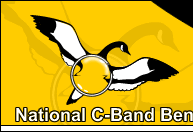January: KO supports KRG and KTC to successfully submit proposals to the National Satellite Initiative for space on the second public benefit transponder on Anik F2. Neskantage First Nation obtains FedNor funding for earth station and broadband connections to every building.
May: KTC receives approval from BRAND to install infrastructure in their satellite-served and terrestrial-served communities. Windigo First Nations Council receives approval from BRAND and FedNor to add Muskrat Dam to the network and expand services in Slate Falls .
May: Industry Canada announces KRG will receive 11 mhz and KTC 4 mhz on second transponder.
June: Sioux Lookout dish constructed and set up. KO Network Manager attends Viasat's VISTA gathering and uses lessons learned from their association to begin discussions with partners to establish an association of all communities (NICSN).
August: Sioux Lookout earth station is operational.
Fall: 14 KRG communities added to the network along with Neskantage in northwestern Ontario . |

